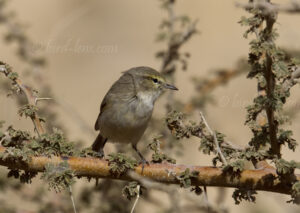 In the early morning light we go to Green Mubazzarah, which is located at the foot of the Hajar Mountains. Green Mubazzarah is a true paradise in the morning. Green Mubazzarah is a picnic area with streams, grass and chalets at the north foot of Jebel Hafeet before the road begins to climb to the top of Jebel Hafeet. Lawn sprinklers are at work everywhere. In between, Pakistanis cleaning the lawn, paths and streets at a brisk pace. The Hajar Mountains in the background are illuminated by the first sun.
In the early morning light we go to Green Mubazzarah, which is located at the foot of the Hajar Mountains. Green Mubazzarah is a true paradise in the morning. Green Mubazzarah is a picnic area with streams, grass and chalets at the north foot of Jebel Hafeet before the road begins to climb to the top of Jebel Hafeet. Lawn sprinklers are at work everywhere. In between, Pakistanis cleaning the lawn, paths and streets at a brisk pace. The Hajar Mountains in the background are illuminated by the first sun.
I give it a try. Let´s pIay the tape of the Plain Leaf-Warbler (Phylloscopus neglectus). When a grey bird appears, I still think “… what kind of little Chiffchaff is that…”. The Plain Leaf-Warbler is described as being fairly common in non-breeding season for Pakistan (Sin and Punjab); in the United Arab Emirates and in the north of Oman it can only be found in a few places in winter. But Green Mubazzarah or the wadis on the Hajar Mountains in general are praised as very reliable for this Phylloscopus.
The Plain Leaf-Warbler breeds quite high; namely between 2,400 m and 4,200 m above sea level in oak forests and in low bushes with juniper. It also occurs above the tree line with sparse shrubs and on alpine meadows. In winter, however, it is found in sparse forests, orchards and also in acacias (Acacia sp.) in drier areas, from sea level to about 1,000 m above sea level.
Nice photos are the outcome when I continue to play the tape and the bird behaves very indignantly. The Plain Leaf-Warbler does gymnastics all the time on an acacia branch right in front of me. But after about 2-3 minutes he doesn’t feel like it anymore and then disappears into distant thorn bushes. A pair of Hume’s Wheatear (Oenanthe alboniger) are clearly drawn to the playing of their song playing in the background. This is a definite response. I walk a little further over the thick pebbles that are making the wadi more and more impassable. Back at the car, I see a completely white Desert Lark (Ammomanes deserti).
Plain Leaf-Warblers are a small, short-tailed warbler only slightly larger than a Goldcrest (Regulus regulus). Overall, it has a simple, unobtrusive appearance. The Plain Leaf-Warbler has a short and fairly inconspicuous pale buff eye-stripe fading over the ear-coverts, a narrow dark eye-stripe and a narrow white eye-ring. The legs are – like these of the Chiffchaff – dark gray or blackish. It differs from the Caucasus/Mountain Chiffchaff (Phylloscopus sindianus) in smaller size, slightly grayer plumage (also generally lacking the warm brown on cheeks, chest and flanks, and a shorter tail). The Plain Leaf-Warbler has been treated as a subspecies of the chiffchaff (Phylloscopus collybita) in the past. But later considered a separate species based on specific vocal differences as well as its morphology.
Green Mubazzarah is a resort area located near Al Ain/UAE at the foot of Hajar Mountains. Lawn sprinklers are plentiful and in full use in the mornings to keep the green in the very desert environment.
To cope with the growing demand for top shots of the rarer species of the Palearctic Bird-Lens is keen to enrich the range of pictures of birds you can find in the western palearctic. Trips to remote places like this one to capture images not only of rare birds of western palearctic were very successful. The nice image of the blog is only a first impression, what you will find in the gallery in the “Picture Shop” very soon. Just give bird-lens.com a message, if bird-lens.com could serve you with an image needed before the new pictures are online.